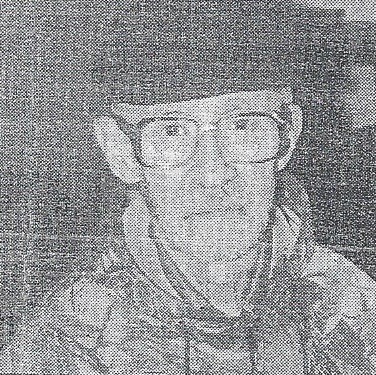

By Regina Villiers. Originally published March 22, 2000 in The Suburban Life, added May 15, 2020.
NBC news anchor Tom Brokaw has called them “The Greatest Generation,” in his book with that title. He wrote that they are the people who “won great victories and made lasting sacrifices.”
Many of them made the supreme sacrifice. The others, the survivors, returned home to rebuild their lives and the world. They are the men and women veterans of World War II.
As their numbers dwindle, more efforts, like Brokaw’s book, need to be made to record the stories of these men and women. The stories of America, by the people who lived them during the most critical and turbulent time in American history.
The Madeira Historical Society has long been interested in doing this. One of their long-range plans has been to restore the WWII monument to veterans, which one stood on the grounds of Sellman School.
Recently, Les LeFevre, current historical society president, came up with an idea to photograph Madeira World War II veterans, or as many as he could reach. His original idea was to include these photos in a time capsule at the new Millennium Plaza Fountain.
Interest and excitement of the society is growing about the project, and they’re now planning to make public displays of the photographs throughout the year in a display case the society maintains in the lobby of the Madeira Library.
In February, they put out a notice for veterans to come to Madeira City Hall to be photographed. So far, they have done this on two successive Saturday mornings. The first Saturday, Doug Oppenheimer manned the camera.
These veterans and this era have long been a subject that grabs my attention, so I took my camera and notebook and jumped flat-footed into the project. Already, I’ve come up with a plethora of leads and photographs for stories, which I hope to write in coming months.
At these first two sessions, the veterans came in quietly and almost reluctantly. They are, for the most part, modest about what they did. It was their duty, a duty they willingly did for their country. And for almost 60years, many of them have tried to forget and to put it behind them. It was so long ago, and yet, it was just yesterday in their hearts.
Of those who signed in and were photographed at these first two sessions, the U.S. Navy led the way. Their numbers included: Dallas Burton, Richard E. Shulz, Albert Purcell, Joseph P. Villari, Ralph Covert, Charles B. Shea, Charlotte Ertel (WAVE), Charles Lammers, Jerry W. Anderson Jr. and Ulen Wallace.
Each of these people has a story to tell. Some of them brought pictures of themselves and their ships, with stories of naval battles and kamikaze attacks. One even brought a book written about his ship.
Right behind the Navy, in numbers, came the Army veterans. Among them are: John S. Mayhall, Emery M. Gardner, George Eshman, Arthur L. Ertel, Walter Zeph, Howard E. Buschle, William R. Collier and Harold Caldwell. These people had stories of D-Day, the Battle of the Bulge, and of serving under General George Patton.
The U.S. Air Force signed in as a strong third, almost tied with the Army in numbers. Among them were: Morgan R. Deane, Stanley I. Rafalo, Thomas P. Flick, C.J. “Jack” Frost, Alfred Broughton, Richard Everhart and Richard M. Valentiner. Some of these men flew the legendary B-17’s.
Eunice M. Younker, a WWII SPAR and a veteran of the U.S. Coast Guard, has led a storied life. Her individual story and photographs will appear in a future column.
By far, the most interesting story to me, involved the lone Marine who showed up to be photographed. Nothing evokes mental images of bravery and valiant deeds more than the words, U.S. Marine.
Harold “Bud” Seevers, U.S. Marine, came to be photographed that day. He served in the Pacific at Okinawa. That says it all. His bravery and his wartime experiences are a lifetime away, but his face still reflects them. His appearance may have changed, but inside, his brave heart still fights on, in a bigger battle. Now is the fitting moment to pay tribute to him.
This is the fitting moment to pay tribute to all of them, these brave men and women who came out of the Depression to defend their country and to give all of us a chance for a good life. Their stories and their faces need to be recorded and preserved. Now.
The historical society plans more photographing sessions for veterans. I hope that more of them will come forward and allow us to record their faces and their stories, to be remembered forever. They are truly American’s “greatest generation.”